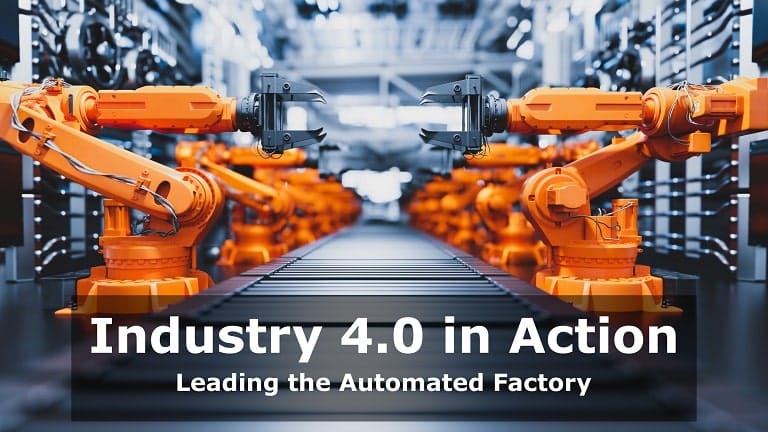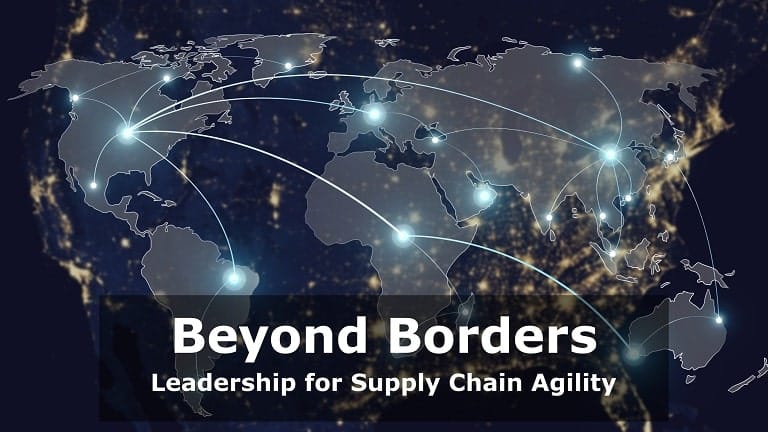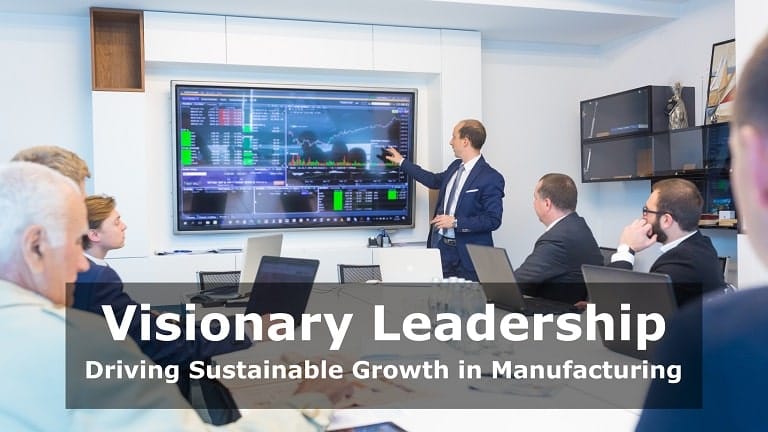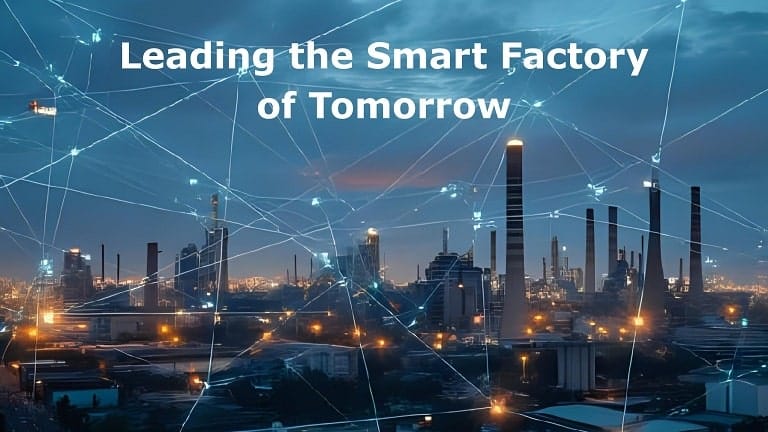- The Evolving Landscape of Manufacturing Leadership
- Key Macro Trends Driving Change in 2026
- The Leadership Recruitment Challenge
- What Forward-Thinking Companies Need in 2026 Leaders
- Why JRG Partners is the Strategic Recruitment Partner You Need
- Conclusion: Navigating the Future with the Right Leadership
The factory floor of 2026 demands a new kind of leader—one who speaks the language of AI, sustainability, and global uncertainty. The manufacturing sector is at a pivotal turning point as we move into 2026. Driven by powerful forces such as Industry 4.0, reshoring initiatives, sustainability imperatives, and ongoing supply chain volatility, the industry is evolving at an unprecedented pace. These macro trends are not only transforming how goods are produced but also reshaping the kind of leadership required to steer manufacturing organizations through complexity and into long-term success.
In this article, we explore the key forces driving change in manufacturing, the pressing leadership recruitment challenges faced by organizations, and what qualities define future-ready leaders. We also examine how JRG Partners stands out as a strategic talent partner for companies seeking visionary manufacturing executives who can thrive in this new era.
The Evolving Landscape of Manufacturing Leadership
The role of manufacturing leadership has undergone a dramatic transformation over the past decade. No longer confined to the factory floor or operations management alone, today’s manufacturing leaders are expected to operate at the intersection of technology, strategy, and innovation.
From Operational Command to Strategic Vision
In earlier years, leadership in manufacturing often emphasized operational excellence — optimizing throughput, maintaining quality standards, and ensuring safety compliance. While these remain essential, they are now foundational rather than differentiating traits. The modern manufacturing leader must be more than a process manager; they must be a strategist, change agent, and innovator.
Strategic mindset: Leaders are now responsible for driving transformation across the organization, including the adoption of emerging technologies and new production models.
Global orientation: As supply chains globalize and reconfigure due to reshoring and geopolitical shifts, leaders must navigate complex international dynamics.
The Rise of Tech-Driven Leadership

Digital transformation, driven by Industry 4.0, has reshaped manufacturing. Robotics, data analytics, artificial intelligence (AI), and IoT have become essential tools — and leaders are expected to understand and leverage them to stay competitive.
Digital fluency is non-negotiable: Executives must lead tech adoption initiatives and ensure integration across business units.
Cybersecurity awareness: With increased digitalization comes greater risk, demanding leaders who understand data protection and cyber threats.
Agility, Innovation, and Cross-Functional Collaboration
Today’s manufacturing leaders must be nimble, ready to respond to supply chain disruptions, workforce shifts, and rapid market changes.
Agility in crisis management: COVID-19, global conflicts, and logistics bottlenecks have shown the importance of swift, adaptive decision-making.
Collaborative leadership: Effective leaders now work cross-functionally with IT, R&D, finance, sustainability, and HR teams — breaking down silos and promoting a unified strategic direction.
Innovation-first mindset: With shorter product lifecycles and evolving consumer expectations, fostering a culture of continuous improvement and innovation is critical.
The Bottom Line
The traditional manufacturing leadership profile no longer fits the complexity of today’s industrial world. Companies now require forward-looking, tech-enabled, and globally competent leaders who can align operations with strategy, inspire transformation, and drive sustainable growth.
At JRG Partners, we understand this evolution and specialize in identifying leadership talent ready to meet the demands of modern manufacturing.
Key Macro Trends Driving Change in 2026
Manufacturing in 2026 is being shaped by an unprecedented convergence of global forces—technological disruption, shifting geopolitical alliances, climate priorities, and unpredictable supply chains. These trends are not only redefining how products are made but also who is best suited to lead manufacturing enterprises through this complex terrain.
Manufacturing leadership recruitment must adapt to these macro-level dynamics. Identifying and developing leaders who can drive transformation, manage risk, and align with rapidly changing expectations is now a competitive differentiator.
Let’s examine four pivotal macro trends driving the evolution of manufacturing leadership in 2026:
1. Industry 4.0 & Digital Transformation
The fourth industrial revolution is well underway, with manufacturers globally embracing automation, AI, machine learning, IoT, robotics, and predictive analytics to boost productivity, accuracy, and scalability. Digital transformation, driven by Industry 4.0, has reshaped manufacturing. Robotics, data analytics, artificial intelligence (AI), and IoT have become essential tools — and leaders are expected to understand and leverage them to stay competitive. However, technology is only as transformative as the leaders who champion and implement it effectively.
Implications for Leadership:
Digital Competency is Mandatory: Leaders can no longer rely solely on operational or engineering knowledge. They must now understand how emerging technologies reshape value chains, customer expectations, and workforce dynamics.
Business-IT Alignment: The ability to integrate technology into strategic decision-making is crucial. This includes leading cross-functional teams that include data scientists, automation engineers, and cybersecurity experts.
Change Management Expertise: As automation replaces routine tasks and introduces new job roles, leaders must manage internal resistance, retrain employees, and foster a culture of continuous learning.
Cybersecurity Leadership: As factories become “smart,” the exposure to cyber threats multiplies. Leaders must stay informed about data governance, intellectual property protection, and compliance.
Leadership Challenge: Finding talent that blends traditional manufacturing experience with deep digital fluency and transformation capability.
2. Reshoring & Regionalization

In response to the vulnerabilities exposed by global supply chain disruptions, many companies are moving manufacturing operations closer to domestic or regional markets—a trend known as reshoring or nearshoring. Geopolitical tensions, tariff wars, and the drive for faster delivery times are also fueling this shift.
Implications for Leadership:
Local Expertise with Global Acumen: Leaders must understand both local market dynamics and global interdependencies. They must build regional hubs while aligning with overall corporate strategy.
Site Development & Operational Scaling: Managing the setup or retooling of facilities in new geographic areas requires logistical prowess, familiarity with regulatory landscapes, and experience in site selection and labor market assessment.
Stakeholder Management: Reshoring brings new relationships with local governments, communities, and talent pools. Leaders must balance business goals with regional economic and social priorities.
Agility in Global Crisis Response: Leaders need contingency planning skills and the ability to pivot operations quickly based on global conditions.
Leadership Challenge: Sourcing leaders who are globally aware, locally grounded, and capable of building new operational models from the ground up.
3. Sustainability & ESG Expectations
Environmental, Social, and Governance (ESG) priorities are no longer optional—they are imperative. Consumers, investors, and regulators expect manufacturers to actively reduce their carbon footprint, use renewable energy, promote ethical labor practices, and report transparently on their ESG performance.
Implications for Leadership:
Sustainability as Strategy: Leadership is expected to embed sustainability into every business function—from design and procurement to logistics and waste management. It’s not just a reporting function; it’s a core driver of competitive advantage.
Circular Economy Thinking: Leaders must move beyond traditional “take-make-dispose” models and explore how products can be reused, recycled, or re-manufactured.
Culture Champions: ESG goals require a culture shift. Leaders must inspire sustainable thinking at all organizational levels and model ethical, long-term-oriented decision-making.
Investor & Public Accountability: With growing interest in ESG reporting, leaders must be prepared to engage with investors, media, and consumers on sustainability metrics and practices.
Leadership Challenge: Recruiting individuals with a deep commitment to ESG who can balance stakeholder expectations with performance goals.
4. Supply Chain Volatility & Risk Management
The post-pandemic world continues to grapple with logistical disruptions, raw material shortages, labor imbalances, and geopolitical unpredictability. These disruptions have exposed the fragility of long supply chains and highlighted the critical role leadership plays in navigating uncertainty.
Implications for Leadership:
End-to-End Visibility: Leaders must ensure that their supply chain operations have transparency and traceability. Digital tools like blockchain, IoT, and supply chain analytics are key enablers.
Resilience Building: Successful executives are developing resilient supply networks through diversification of suppliers, strategic stockpiling, and reshoring of critical components.
Proactive Risk Assessment: Leadership must continually evaluate geopolitical, environmental, and economic risks to anticipate potential threats before they escalate.
Collaborative Relationships: Today’s supply chains rely on strong partnerships. Leaders must foster trust and alignment with suppliers, third-party logistics providers, and internal procurement teams.
Leadership Challenge: Finding leaders who are not just good at managing cost and efficiency, but also excel at planning for volatility, scenario modeling, and agile response.
The Leadership Recruitment Challenge
As the manufacturing sector undergoes rapid digital and operational transformation, the demand for skilled and future-ready leadership is growing faster than the talent pool can supply. Companies are encountering significant challenges in identifying and attracting the right leaders who can navigate this complexity and drive long-term success.
1. Shortage of Hybrid-Skilled Leaders
Today’s manufacturing leaders must wear multiple hats — they need to be technically sound, digitally fluent, and strategically visionary. However, the market lacks professionals who embody this hybrid profile.
Most candidates are either operations-oriented or technology-focused, but not both.
Few possess the leadership agility to integrate digital tools like AI and IoT into large-scale operations while still delivering bottom-line results.
There’s a growing gap between traditional engineering-focused leaders and the digital transformation demands of 2026.
2. An Aging Workforce and Lack of Succession Planning
A significant portion of current manufacturing leadership is nearing retirement. Unfortunately, many organizations have not adequately planned for this shift.
Institutional knowledge and legacy systems understanding are at risk of being lost.
Mid-level leaders often lack the mentorship and cross-functional exposure needed to take on senior roles.
The pipeline of emerging leaders is thin, particularly in core industrial regions where talent migration has left gaps.
3. High Competition for Niche Executive Talent
The rise of Industry 4.0, sustainability mandates, and supply chain reinvention has created a competitive race for leaders with specialized skills.
Companies are now competing for the same limited pool of executives with digital manufacturing, ESG, or global sourcing expertise.
High demand from other industries (e.g., tech and logistics) adds to the talent scarcity.
Traditional recruitment methods often fall short in reaching passive or hard-to-find talent.
4. Misalignment Between Leadership Capabilities and Transformation Needs
Many organizations find themselves hiring leaders who excel in maintaining the status quo but struggle with driving transformation.
Misaligned hires delay innovation and increase the cost of change.
A lack of cultural fit, especially in agile or sustainability-driven environments, leads to turnover or resistance.
Companies must move beyond experience-based hiring to competency- and potential-based recruitment.
In this shifting environment, JRG Partners stands out by understanding not just job descriptions but transformation goals — aligning leadership recruitment with the future of manufacturing.
What Forward-Thinking Companies Need in 2026 Leaders

In 2026, forward-thinking manufacturing companies are not just looking for operational managers — they are seeking visionary leaders who can navigate complexity, drive innovation, and lead diverse, digitally enabled teams. As the industry evolves, so too must the leadership criteria.
1. Strategic Vision with Digital Literacy
Manufacturing leaders must move beyond tactical oversight and embrace strategic thinking powered by technology.
They should be capable of aligning business goals with digital transformation roadmaps.
Proficiency in technologies like IoT, AI, robotics, and data analytics is no longer optional.
Leaders must confidently drive automation, optimize digital supply chains, and leverage real-time data for decision-making.
2. Adaptability and Resilience Under Uncertainty
The post-pandemic era has underscored the importance of resilience and agility in leadership.
Future-ready leaders must be comfortable operating in volatile, uncertain, and fast-changing environments.
They should excel in crisis response, scenario planning, and maintaining team morale during disruption.
Resilience also means a willingness to rethink traditional processes and continuously adapt strategies.
3. Inclusive and Sustainable Leadership Mindset
Today’s leaders are held accountable not just for profit, but for purpose.
Inclusion, diversity, and ethical governance are critical for innovation and brand reputation.
Sustainability is no longer a siloed initiative — it must be embedded into leadership DNA.
Leaders need to align teams with ESG goals, reducing environmental impact while maintaining efficiency.
4. Deep Sector Knowledge with a Future-Focused Approach
Industry-specific insight remains vital, but it must be paired with a forward-thinking outlook.
Understanding legacy systems, regulatory constraints, and supply chain nuances is essential.
However, the most effective leaders also think ahead — anticipating market trends and positioning the company for long-term success.
5. Ability to Lead Multi-Generational, Tech-Enabled Teams
With Gen Z entering the workforce and boomers nearing retirement, leadership must span generational divides.
Great leaders communicate across age groups, inspire purpose, and embrace new ideas.
Comfort with hybrid teams, remote collaboration tools, and digital productivity platforms is critical.
JRG Partners helps organizations identify such multifaceted leaders — those who are equipped not only for today but for the challenges of tomorrow.
Why JRG Partners is the Strategic Recruitment Partner You Need
In a rapidly transforming manufacturing landscape, choosing the right executive search partner can make the difference between incremental improvement and industry leadership. At JRG Partners, we specialize in manufacturing leadership recruitment — bringing together deep industry insight, innovative sourcing strategies, and a consultative approach that aligns with the future of manufacturing.
1. Industry-Specific Expertise
Our team understands the intricacies of the manufacturing sector — from traditional heavy industry to advanced smart factories. We’re fluent in the language of lean operations, Industry 4.0 technologies, supply chain complexity, and sustainability imperatives.
Over a decade of experience placing manufacturing executives across automotive, electronics, food processing, industrial machinery, and more.
Deep understanding of sector-specific leadership challenges and regulatory frameworks.
2. Proprietary Search Processes for Next-Gen Leaders
We go beyond resumes and keywords. Our proprietary methodology blends behavioral interviews, leadership assessments, and market intelligence to uncover transformational talent.
Focus on identifying hybrid-skilled leaders with digital acumen and strategic foresight.
Tools to assess cultural fit, agility, and ability to lead through change.
3. Proven Success in Digital-First Placements
From Chief Operating Officers driving automation initiatives to Supply Chain VPs implementing predictive analytics, we’ve successfully placed leaders who’ve delivered measurable transformation.
Case studies available on successful placements in high-growth, tech-enabled manufacturing firms.
Strong track record with both mid-market and enterprise-level manufacturers.
4. Consultative and Long-Term Talent Partner
Unlike transactional recruiters, JRG Partners acts as a long-term strategic advisor.
We partner closely with clients to refine role requirements, assess internal gaps, and build future-ready leadership pipelines.
Post-placement support and executive onboarding consultation ensure success beyond the hire.
At JRG Partners, we don’t just fill roles — we find the right leaders to future-proof your manufacturing organization.
Conclusion: Navigating the Future with the Right Leadership
As manufacturing continues its transition into a digitally connected, sustainable, and globally responsive ecosystem, the demand for bold and adaptable leadership has never been greater. Navigating 2026 and beyond requires executives who can integrate emerging technologies, manage complex supply chains, embrace sustainability, and lead diverse, tech-enabled teams.
However, identifying such multifaceted leaders is a challenge — one that demands more than traditional recruitment methods. Organizations need a partner who understands the evolving manufacturing landscape and can align talent acquisition with strategic transformation goals.
At JRG Partners, we bring a forward-thinking approach to manufacturing leadership recruitment. With deep industry expertise, a proven track record, and a commitment to long-term client success, we help companies find the leaders who will shape the future of manufacturing — not just adapt to it.
Looking to hire top-tier manufacturing executives? Learn more about our specialized approach on our Manufacturing Executive Recruiters service page.
Ready to build your next-generation leadership team? Contact JRG Partners today.


